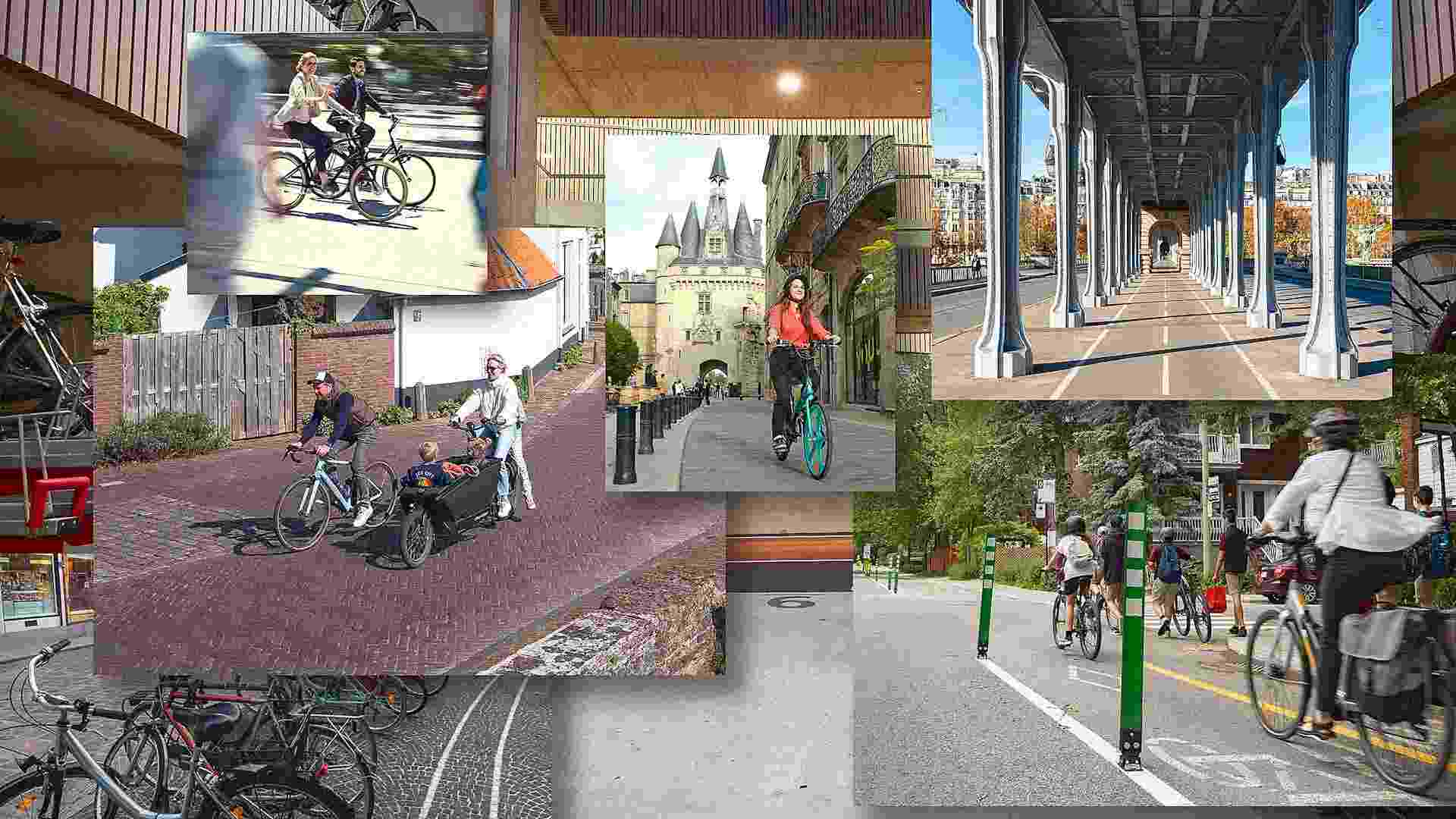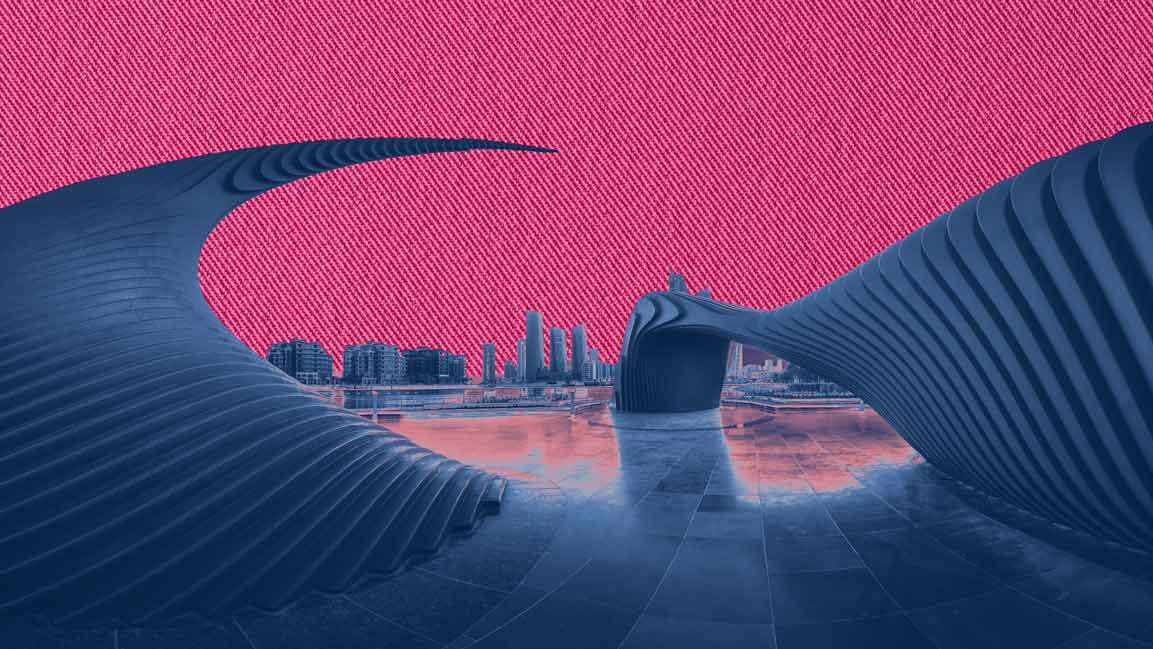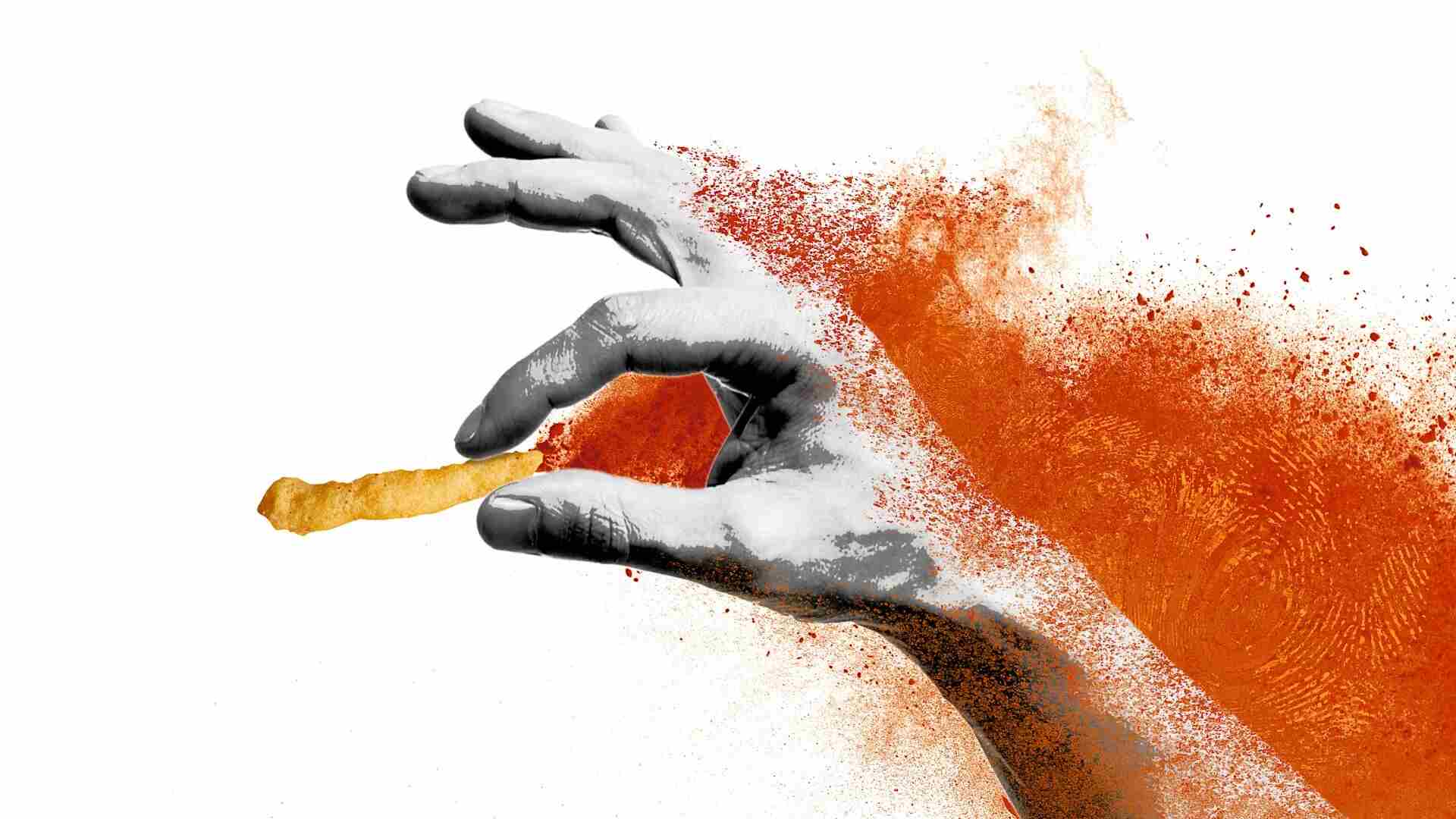- | 10:00 am
This is how nature influences design and the art of cultural tourism in Saudi Arabia
Hibah Albakree, Managing Partner and Co-Founder of DLE, shares insights into creating Diriyah Season's two flagship events—Layali Diriyah and Minzal

Saudi Arabia’s tourism and hospitality sectors are thriving, with international arrivals surging to 30 million in 2024. Backed by its Vision 2030 ambitions, the kingdom is channeling $110 billion into expanding its hotel capacity by 362,000 rooms by the decade’s end, reinforcing its drive to become a global tourism powerhouse.
Supporting this momentum is Designlab Experience (DLE), an architecture and creative studio headquartered in Dubai and Riyadh, known for crafting immersive, large-scale experiences.
Partnering with the Diriyah Company (DGCL), DLE has brought to life Layali Diriyah—an open-air, multi-sensory installation celebrating Saudi Arabia’s heritage and future.
Set amid a palm-fringed landscape near the UNESCO World Heritage site of At-Turaif, the destination blends gastronomy, retail, art, and live entertainment. Visitors can explore eight curated restaurants, a boutique retail village, five stages spotlighting mainly local performers, and a strikingly designed communal seating area.
THE MAIN THEMES
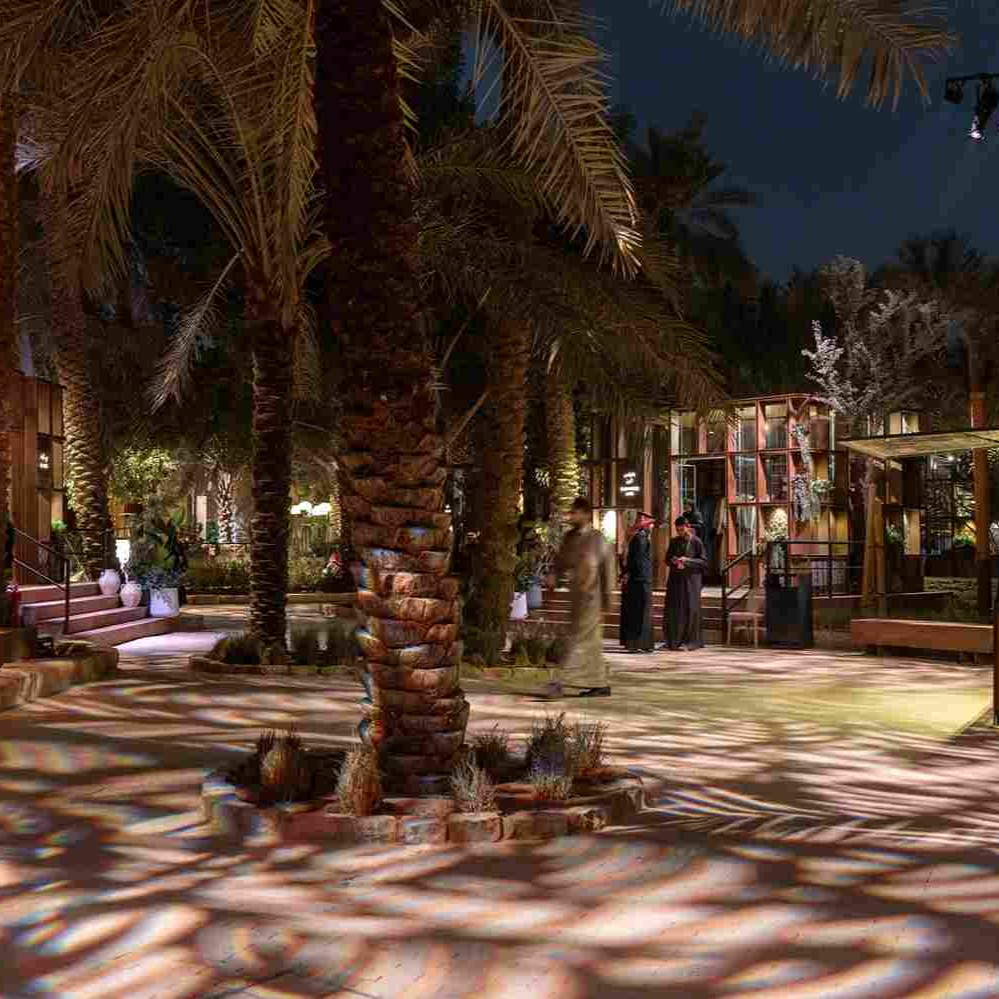
Layali Diriyah by Designlab Experience
Hibah Albakree, Managing Partner and Co-Founder of DLE, shares insights into the making of the annual event, now in its third edition, delving into the three main themes behind the event: nature, craftsmanship, and heritage and how these themes are reflected in the event’s execution.
Albakree says nature, which plays a central role in shaping the project, always makes designing this annual event a fresh learning experience. The palm tree farm dictates the layout, compelling the design team to adapt to the site’s natural contours.
“Deciding where to place everything, understanding the best placement for the entire journey, since nature dictates where we can build or not build,” Albakree adds.
“In a way, nature becomes the client or decision-maker in this project. If a tree is in the way, that tree leads the way in how we treat the space.”
She continues: “This project has taught us a lot, as we work in free spaces most of the time. What I like about this is that nature forces you to adhere and behave.”
Albakree also emphasizes DLE’s commitment to sustainability, noting its focus on using natural and reusable materials whenever possible. “There isn’t much waste at Layali Diriyah. If you look at this year, we haven’t built much. It’s mostly reusable platforms, and all the shading and materials we used are minimal.”
The event’s craftsmanship reflects careful attention to detail. Every material is selected to harmonize with the setting, blending seamlessly with the environment—the ambiance, the sky, and the natural light. The overall atmosphere is intentionally calming, creating a space where visitors feel connected to their surroundings.
When integrating heritage and culture, DLE takes a subtle approach. “We’re not trying to make you feel like we’re taking you somewhere unfamiliar. We’re not imitating a project from another environment. Instead, it’s meant to feel like a continuation of the Diriyah story. The cultural element comes through the music, our colors, and the serenity it creates.”
ART AND HERITAGE
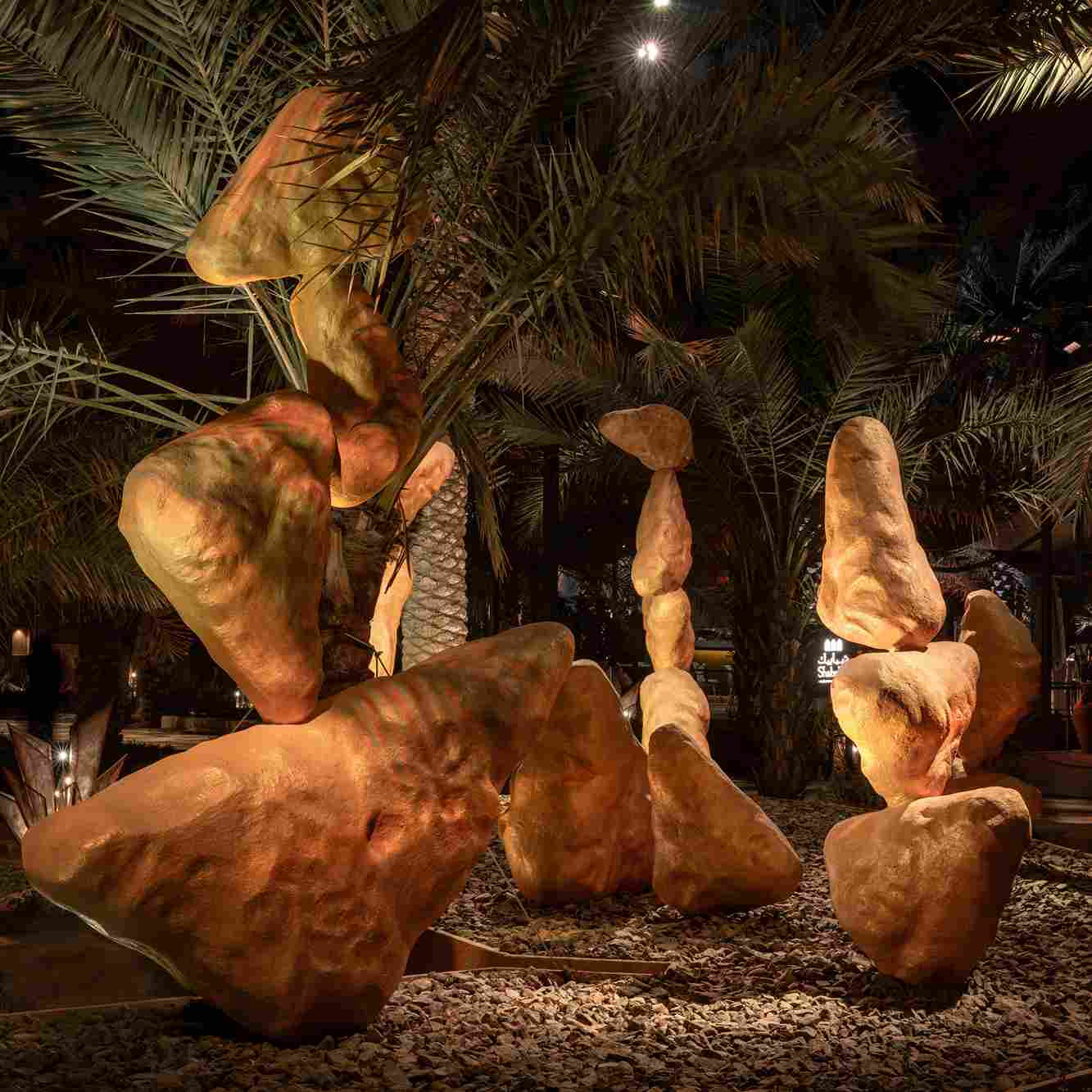
Lahauj by Artist Khulod AlBugam
A key aspect of weaving Saudi culture into the event is collaborating with local talent, from culinary experts and retail vendors to performers and artisans behind the art installations.
At Layali Diriyah, these installations serve as a vital expression of Saudi heritage and storytelling. This year’s edition showcases the work of three prominent artists— Khulod AlBugami, Saad Al Howede, and Zahrah AlGhamdi.
“It was so nice to see how Layali, which wasn’t originally an exhibition space for artists, became one. Every artist we approached was willing to collaborate, even offering to adjust their schedules and workflow to make the project feasible. It was beautiful to experience how easy it was to sell the vision,” says Albakree.
Focused on infusing the historic site’s vision into contemporary artworks, the event features artworks like AlBugami’s Lahauj, which draws inspiration from traditional Najdi architectural windows, crafting a symbolic link between eras.
Dr. Al Howede’s Three Golden Stages explores the evolution of Saudi identity through Qitan, a bisht material that narrates pivotal moments in the nation’s history. AlGhamdi’s Birth of a Place is a poignant reflection on Diriyah’s origins, using sculptural clay forms to symbolize cycles of destruction and rebirth.
Elsewhere, Palm Fronds by Designlab Experience features luminous, clustered structures inspired by Diriyah’s iconic palm trees, creating a captivating blend of organic forms and modern lighting. The exhibition’s entrance is dominated by a striking, serpentine sculpture crafted from intricately woven baskets, a nod to regional weaving traditions.
Highlighting how Layali Diriyah balances cultural authenticity and refined design, Albakree says, “This year, Layali was mostly inspired by architectural elements—squares, triangles, little features you see in the doors and structures. We weren’t trying to mimic the silhouette of the area, as that’s not what suits Layali.”
“We aimed to merge practical, efficient architecture that fits the Layali setting—with its weather and rain conditions—with details drawn from the city and the research we’ve conducted,” she adds.
THE MINZAL EXPERIENCE
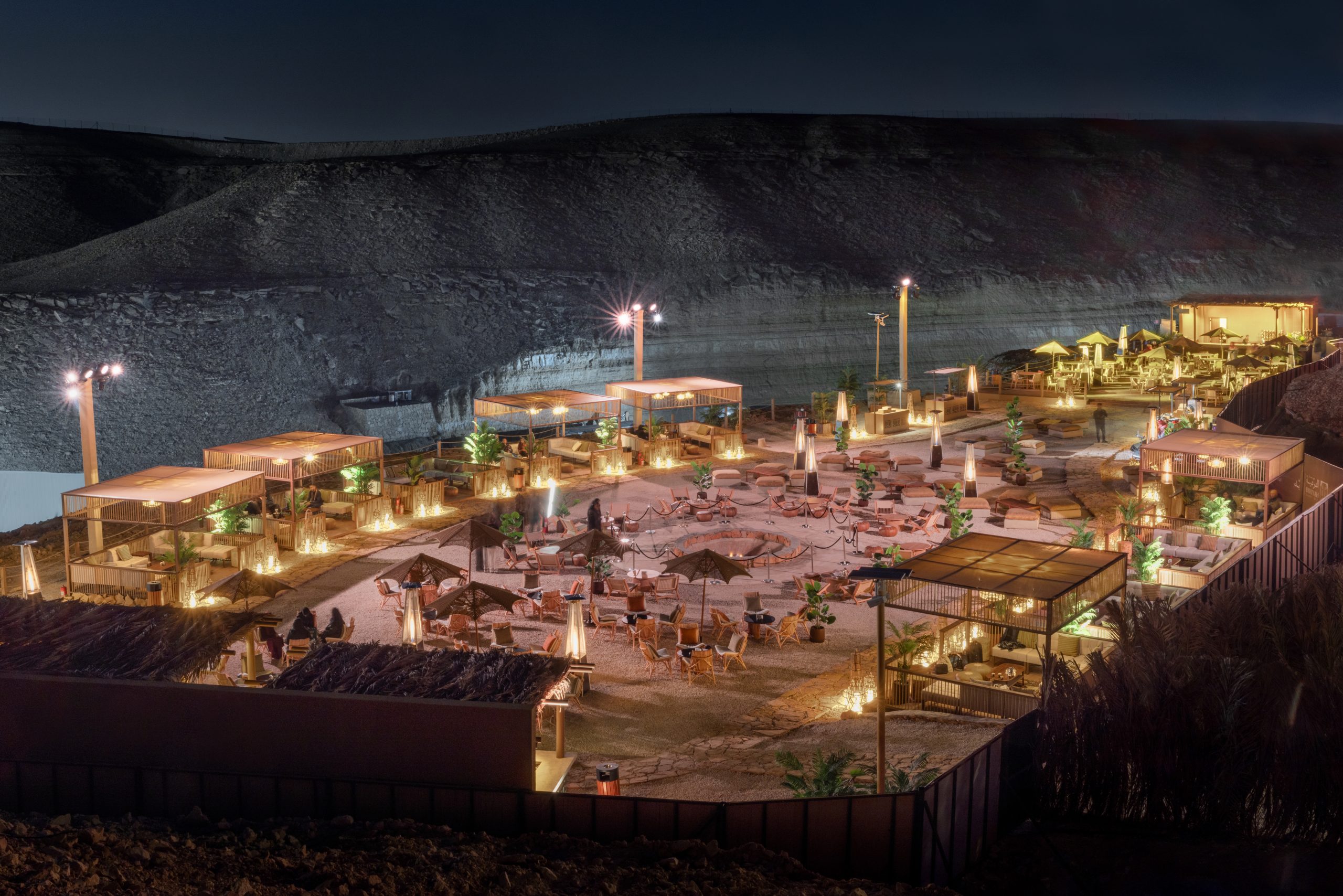
Minzal by Designlab Experience
Simultaneously, near an equestrian center in Diriyah, DLE’s Minzal cultural retreat blends tradition with modernity in a rugged, mountainous setting. The 80,000 sq ft site offers experiences like stargazing, horseback riding, live performances, and luxury glamping, all rooted in Saudi heritage.
Inspired by historical mapping techniques, Minzal features modern structures adorned with Najdi patterns and built from natural materials like rope and woven palms, creating a strong connection to the landscape. The retreat includes distinct zones—Birwaz, Almashab, glamping, and stargazing—guiding visitors from the camp’s entrance to a hilltop observatory.
Guests can engage in pottery, palm weaving, and wood carving workshops. Almashab is a social hub with shisha lounges, a central bonfire, and food stalls offering Saudi cuisine in palm-roofed structures.
Albakree discusses how storytelling is woven into spatial design, sharing that her understanding of Saudi culture deepened after attending a workshop with Princess Sara bint Mashour Al Saud, who emphasized the importance of tradition and movement.
“Princess Sara, who represents DGCL’s historical and cultural perspective, told us they didn’t want tents but spaces that evoke the nomadic experience.”
“Minzal was designed to mimic the nomadic history experience. Birwaz, for example, focuses on hospitality and restaurants, reflecting how guests were hosted during travel in the past.”
She describes the glamping area, where visitors “camp” as travelers once did, and where Minzal encourages guests to rediscover simple, traditional activities.
“The designs are humbler and simpler, and the furniture is more colorful and playful. It’s part of a journey, whereas Layali is more of a destination—a luxurious experience. Minzal invites you to get a little messy, sit on the floor, and immerse yourself in the past.”
She also highlights how, much like Layali Diriyah, Minzal’s natural surroundings shape its design. Albakree explains that DLE embraces this creative challenge, recalling when a client expressed concern about tree placement at the Layali Diriyah site.
“We live around figuring out what to do with the tree. We make a tree a column, we make a tree the center of a table, or we make a tree part of the main feature. We’re so used to working around this environment and making it come to life,” says Albakree. “It’s such a beautiful element because you’re integrating it, and it makes it more fun, paves the way.”
She adds, “That’s what makes it fun and playful and has given us a very good experience and a strong edge. Now, working anywhere has become so much easier.”
TRUE SAUDI HOSPITALITY
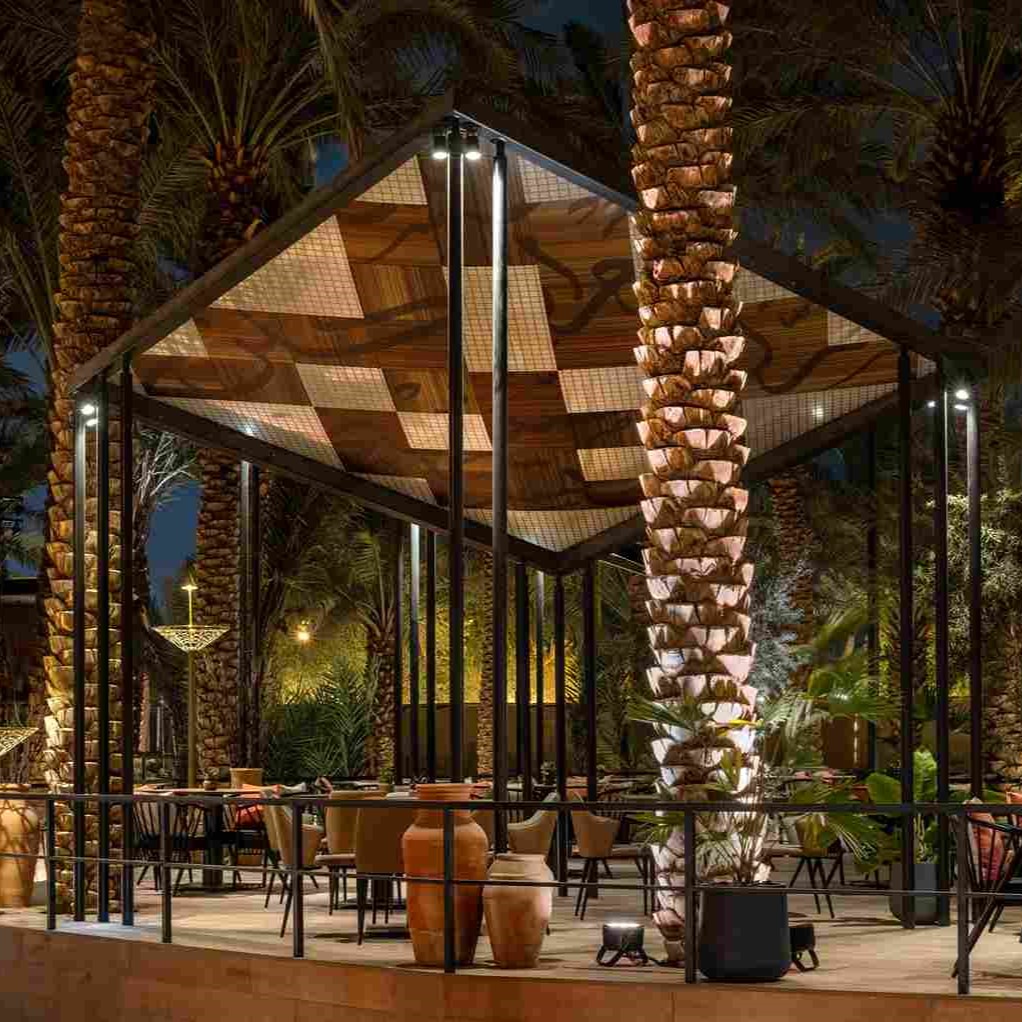
Restaurant Area at Layali Diriyah
Layali Diriyah aligns with Saudi Arabia’s Vision 2030 and the DGCL’s objectives. Albakree says Layali represents true hospitality—”true Saudi, the true heart of Diriyah.”
“Many Saudi projects are well done and beautiful, but each has a different vision. Layali is the project people bring international guests to because it feels special, close to the heart, and charming.”
Highlighting the significance of creating such an experience close to a UNESCO World Heritage site, she says, “Layali’s proximity to that site sends a message. It tells the story of how Saudi Arabia started and how the royal family rose. Layali, being so close to that, reinforces the storytelling.”











